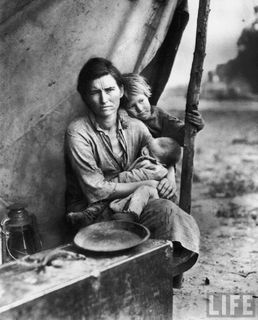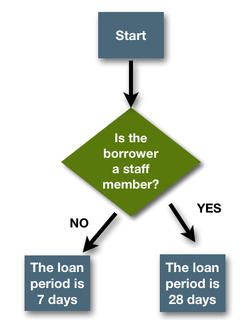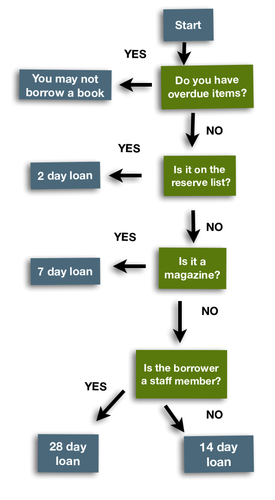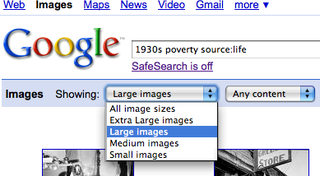Teaching with Historic Photographs: The Google LIFE Photo Archive
 For example here's one of the archive photos taken by Dorothea Lange in the Migrant Mother Series. It makes a great contrast to the iconic photo she took that day that is more commonly reproduced in textbooks. (You might ask your students which of the five photos they would choose, and why?)
For example here's one of the archive photos taken by Dorothea Lange in the Migrant Mother Series. It makes a great contrast to the iconic photo she took that day that is more commonly reproduced in textbooks. (You might ask your students which of the five photos they would choose, and why?)Start Your New School Year with Rigor and Relevance

start the school year
As a social studies high school teacher, I faced over 25 years of the first day of school. When I first began teaching, I did usual thing – working through the class list (“do you prefer Patrick, or Pat?), a dry recitation of the class rules, passing out the textbooks. Blah, blah, blah – think of the message it sent to my students.
As my teaching style evolved from the lecture / work sheet model into a more engaged learning environment, I redefined how I wanted to introduce my students to my course. I also came to understand that it was imperative that I get all my students to contribute a few comments to the class during those first few days. Very quickly classes learn which students are the talkers and non-talkers. Once those roles are locked in – it’s very difficult for student for break out of them.
So I did not waste the opening week of school introducing the course – my students solved murder mysteries. I took simplified mysteries and split them into 25-30 clues, each on a single strip of paper. (You can download one of the mysteries and rules from my website.) I used a random count off to get the kids away from their buddies and into groups of 5-6 students. Each group got a complete set of clues for the mystery. Each student in the group got 4-5 clues that they could not pass around to the other students. They had to share the clues verbally in the group and that guaranteed that every student is a talker on day one.
While the students worked to solve the mystery – I concentrated on learning the student names. After I introduced the mystery, I bet them that by the end of the first class, I could go around the room and recite their names. While they worked on the mystery, I circulated getting to know students and their names. Another message – in this class, we’re all learners.
Over the next few days we would process their problem solving skills, group dynamics, differences between relevant and irrelevant information and introduce the idea of higher-order thinking like analysis, evaluation and creating. We might even have time to try another mystery to see if they got better.
By week two, I got around to passing out the textbooks. But by then I had already introduced them to what was most important about my class.
Image credit: flickr/pobre.ch
Strategies for Rigor and Relevance
I just returned from an engaging one day workshop with over 100 high school teachers and administrators from the Green Bay Wisconsin area (sponsored by CESA 7).
I brought my TurningPoint audience response system to gather feedback and generate discussion on some essential questions:
1. What does rigor and relevance look like in the classroom?
2. To what extent is learning student- or teacher directed?
3. How can I help build literacy and still teach my content?
Here’s some comments from the participant evaluation:
“Well-organized, interactive and well structured. Peter demonstrated his own method for rigor and relevance while teaching us, so we participated as our students would”
“Changed the way I will instruct my student. And changed my expectation of my students as well.”
“The workshop was effective because you made us reflect on our classroom practice and our expectations of students. Then you supplied us with techniques and strategies to improve instruction.”
Updated handout with audience response data Download pappas-cesa7-handout.pdf 1.8 MB pdf
Teaching American History Grant – “Student as Historian”
This week I had the opportunity to work with secondary social studies teachers in Volusia County Florida – a talent group who are participating in a multi-year “Teaching American History Grant.”
The focus of my two-day workshop was the “Student as Historian.” We practiced strategies that teachers can use to shift their role from teacher as “education dispenser” (gathering, distilling and delivering information); to teacher as “educational architect” who can design classrooms where students do the work of constructing meaning. Lessons were designed to enable students to do the work of historian using a variety of comprehension skills:
– Identify details – can you identify key symbols, words, visual elements?
– Recognizing context – where is this taking place, time period, who’s involved?
– Identify relationships – who are these people, what is their relationship to one another?
– Identify opinions – is there a point of view expressed in the source information?
– Infer meaning – is there meaning that can be extracted from what’s between the lines?
– Make predictions – based on the information, what will happen next?
For demonstration, I assembled a group of documents that students could use to answer essential historic questions. I’ve put the documents and guiding activities online at a temporary web site: Selections from an American History Collection




